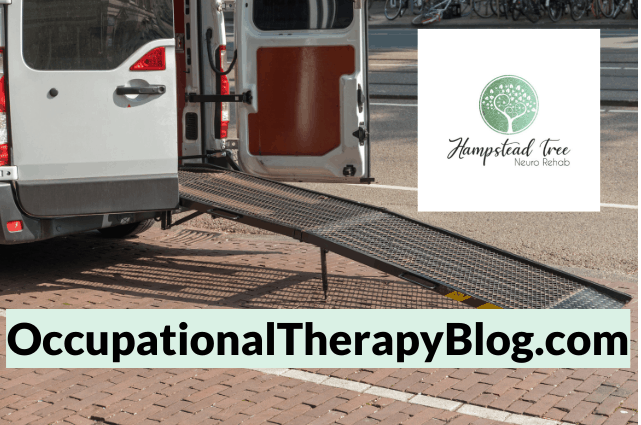
A wheelchair-accessible van is necessary for many people with disabilities to move around comfortably and even seek outside work. Without one, people that have physical handicaps are not able to travel or get to local resources such as groceries. But how do people afford these expensive vehicles?
Figuring out how to get a wheelchair-accessible van can be difficult, but the advantages of having one are worth the effort. Read on to learn more about wheelchair-accessible vans and how to make them more affordable.
Financing a Wheelchair Accessible Van
Financing a wheelchair-accessible van can be one of the most difficult things for someone with disabilities, especially if they’re trying to acquire one in the wake of an accident. The equipment added onto a wheelchair-accessible van includes equipment such as the following:
- Wheelchair tie-downs
- Wheelchair docks
- Driver hand controls
- Transfer seats
All of these customizable add-ons can cost up to twenty-five thousand dollars when added on to a normal van, but buying a van that is already wheelchair equipped can cost up to eighty thousand dollars. This is beyond the ability for most disabled individuals to pay without some kind of financial help.
Without looking into outside financial aid, the first way to reduce the amount of money you need for a wheelchair-accessible van is to finance the vehicle. This helps to keep the payments for the van low enough to make it a feasible purchase option. Another way to reduce cost is to look into purchasing a wheelchair-accessible van second-hand.
The disadvantage of financing a wheelchair-accessible van is that this can add a lot of interest to your payments, increasing the overall cost of the van over time.
Financial Aid for Wheelchair Accessible Vans
For people who can’t afford a wheelchair-accessible van even with monthly payment options, there are state grants available to help disabled people purchase wheelchair-accessible vehicles. These disability grants can go a long way towards helping people acquire the equipment they need to live a mobile life.
To find a list of disability grants for wheelchair-accessible vehicles by state, check this map at Mobility Resource. Disability grants are a great way to reduce the cost of a wheelchair-accessible van for low income families and can help reduce the financial burden of the vehicle for disabled people in their month-to-month payments.
Raising Money for a Wheelchair Accessible Van
Another way that people can reduce the costs of a wheelchair-accessible van is to raise money for the van through charity auctions. Here are just a few ways that people can raise money for a wheelchair-accessible van:
- Go-Fund-Me or Kickstarter campaigns: One way that many people have successfully raised money for a wheelchair-accessible van is through personal fundraising efforts through digital fundraising campaigns on social media. Platforms like Go-Fund-Me and Kickstater serve as a way for people to help crowd-source wheelchair van costs.
- Church donations: For people who are part of a church community, churches can be a good source of charity to help people reduce the costs of their wheelchair-accessible van. This is especially true if a van is needed in the aftermath of a catastrophe or accident since many churches have protocols to step in and help the needy.
- Disability advocacy groups: Depending on where an individual lives, disability advocacy groups can be a good way to look for financial resources to pay for a wheelchair-accessible vehicle. In many cases, these vehicles are shared or passed down between different owners within a disabled community to help reduce costs.
Looking for help from others can be one of the easiest ways to make a wheelchair-accessible van more affordable. Luckily, there are resources available in many areas that can help take some of the burden off disabled people and their families to shoulder these costs.
Will Medicare Pay for a Wheelchair Van?
Unfortunately, Medicare will not pay for a wheelchair-accessible van. While Medicare will pay for mobility scooters and other mobility equipment, it will not pay for the costs of an entire vehicle. (Source: Braun Ability)
Medicare only covers the following costs:
- Outpatient services
- Drug prescriptions
- Hospital and nursing services
- Subsidized health insurance payments
At the end of the day, Medicare can’t be depended on to offset the costs of a wheelchair-accessible van.
Does Health Insurance Cover a Wheelchair Van?
Like Medicare, most private health insurance companies will not cover the cost of a wheelchair-accessible van due to the large amounts of money needed. While health insurance companies will help cover many of the costs associated with reduced mobility for a disabled person.
Like Medicare, private health insurance policies will often have riders that offer subsidies for other mobility-related equipment such as wheelchairs, but not wheelchair-accessible vehicles. (Source: Southern Bus and Mobility)
Legal Settlements Can Pay for Wheelchair Vans
If a wheelchair-accessible van is needed in the aftermath of an accident in which an individual loses their ability to walk, one way that the van can get paid for is through a legal settlement.
When another person is directly responsible for the action that caused a person to lose their ability to walk, such as negligence in a car accident, they are legally responsible for providing financial compensation to the injured party.
The major downside of trying to pay for a wheelchair-accessible van through a legal settlement is that the issue can sometimes get tied up in court for months accruing expensive legal fees. The responsible party may also not have the money to cover a legal settlement out of their own pocket.
Tips for Affording a Wheelchair Van
The worst part about trying to get together the funds to afford a wheelchair-accessible van out of the blue is that many people who are forced to find a wheelchair-accessible van unexpectedly don’t have any plans in place to afford one. Here are a few additional ways that people can help reduce the financial burden of purchasing a wheelchair-accessible van:
- Have an emergency fund. No matter where you are in life, having an emergency fund with several thousand dollars in savings can help offset the cost of large purchases like a vehicle if they have to be made suddenly.
- Keep liquid assets. Making sure that your valuable assets are easy to sell and liquidate in case you need to raise a lot of cash in a hurry can help in the aftermath of an accident when finding and purchasing a wheelchair-accessible van becomes necessary.
- Save up over time. While the costs on a wheelchair-accessible van may be high, knowing that you have a child with a medical condition that will require them to need one gives parents a decade and a half to put together the money before that child will be old enough to learn to drive it. This can help keep costs manageable.
- Convert a traditional van. Converting a regular van with wheelchair accessibility equipment can cost between ten and twenty thousand dollars, which is significantly cheaper than buying a new wheelchair-accessible van designed for disabled transport. (Source: 1-800-Wheelchair)
Acquiring a wheelchair-accessible van can be one of the hardest parts of dealing with mobility loss, which is why paratransport is so popular. However, owning one can be well worth the costs when it increases a person’s ability to live a normal life.
Wheelchair Accessible Vans Are Expensive
No matter where you get your wheelchair-accessible van, chances are you’re going to pay tens of thousands of dollars for the privilege of driving one. Disabled services, disability grants, and local charities are a great way to help keep these vehicles available for the people who need them most.
Content Disclaimer
The information contained above is provided for information purposes only. The contents of this Blog article are not intended to amount to advice, and you should not rely on any of the contents of this Blog article. Professional advice should be obtained before taking or refraining from taking any action as a result of the contents of this Blog article. OccupationaltherapyBlog disclaims all liability and responsibility arising from any reliance placed on any of the contents of this Blog article.

